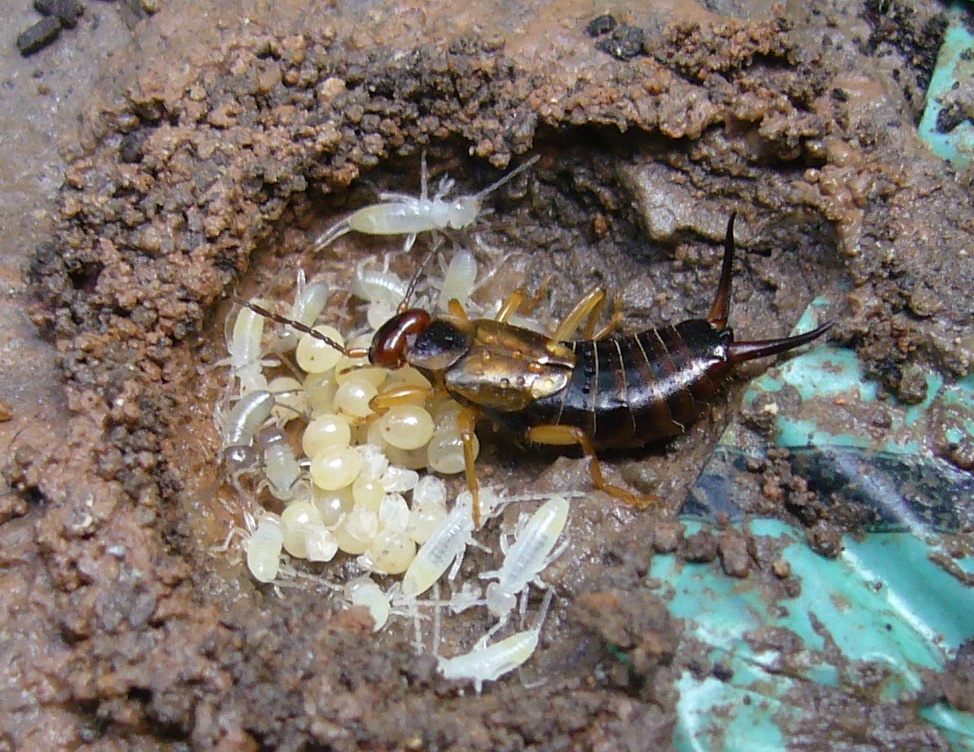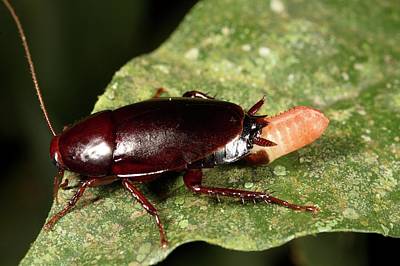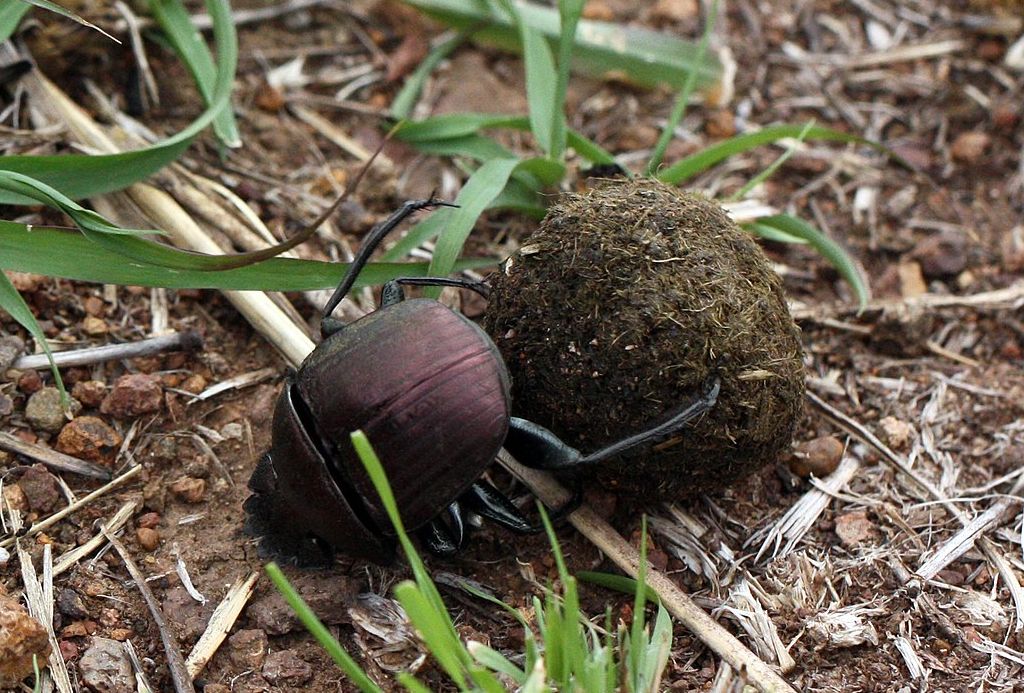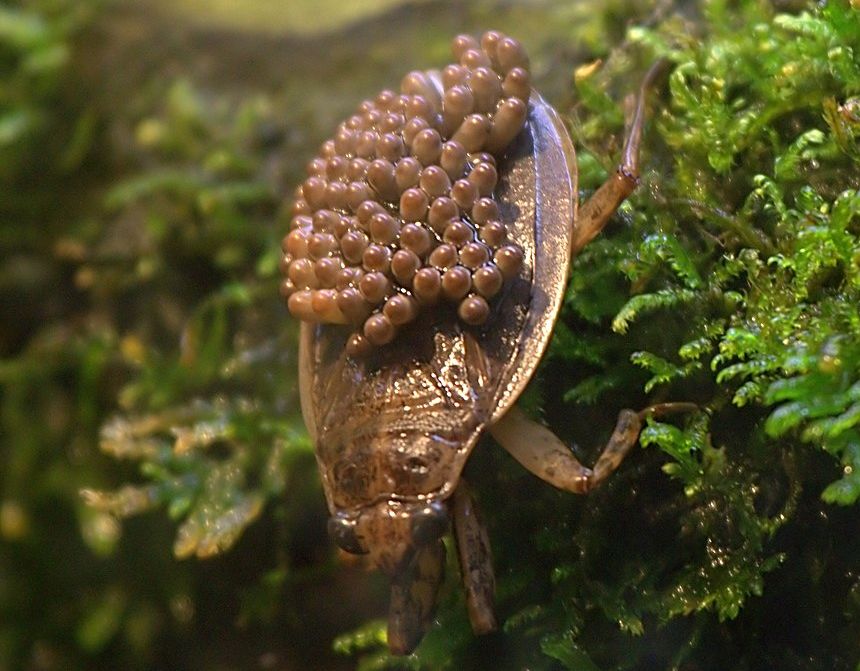In most insects, care for the next generation is limited to finding a good place to lay eggs, and afterwards parents do not care any more what happens with their offspring.
But there are also some insects that go to great lengths to provide for their offspring. Below a few examples, maybe some you wouldn’t expect.
Earwigs

Females of these common insects build nests in the ground for their eggs. They tend to the eggs and clean them from fungi to increase their hatching success. The mother also takes care of her young once they hatch. Young earwigs may feed on food partially digested and spit up by their mother.
Cockroaches

Many cockroach species also take care of their eggs and young. They carry the eggs on the end of their abdomen in a special egg case. They can also shield or even suckle their offspring. In some species the eggs develop inside the female body until they hatch.
Tsetse flies

The tsetse flies (well-known for spreading diseases) go even further. They do not lay eggs, but their young develop inside their uterus, both in egg and larval form. A single offspring develops inside a female at a time, and is nurtured by a milky substance produced by a specialised gland. It is safe within its mother’s body and after it is born it is ready to enter the next developmental stage – a pupa.
Dung beetles

Have you ever seen a beetle rolling a nice ball of dung? That was a dung beetle preparing food for its young.
First the parents dig tunnels and brood chambers under or nearby a dung pile. Then they bring the food/dung there. In different species females, males or both make dung ball in which the female make a hole where she lays a single egg. Afterwards she seals the hole up with more dung. When she finishes all the brood balls, she guards them and licks them from time to time, most likely to prevents fungal growth. In many species both males and females have horns or other weapons to defend their dung and young.
Some dung beetles provide different types of food for their young: pieces of dead animals or even ants or millipedes killed for this purpose.
Giant water bugs

There are also insects in which only fathers take care of the offspring. For example, in giant water bugs females lay eggs on the father’s wings and he carries them around till they hatch.
Main information source for this post: “How to read an insect” – book by Ross Piper
Polską wersję tego wpisu możesz znaleźć tutaj.
Photos credits: Earwig by Tom Oates, 2010, CC BY-SA 3.0, https://commons.wikimedia.org/w/index.php?curid=11264136; Cockroach from Pexels; tsetse fly by Geoffrey M. Attardo – PLoS Neglected Tropical Diseases March 2008 Image page, CC BY 2.5, https://commons.wikimedia.org/w/index.php?curid=5988579; dung beetle by Charles J. Sharp – Own work, from Sharp Photography, sharpphotography, CC BY-SA 4.0, https://commons.wikimedia.org/w/index.php?curid=51414304; giant water bug by Greg Hume – Own work, CC BY-SA 3.0, https://commons.wikimedia.org/w/index.php?curid=17771082

